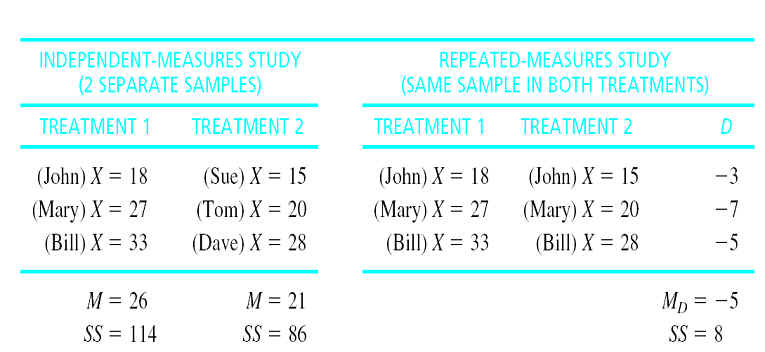
Psy 230 Stats/Methods I
Chapter 11
Related (Paired) Samples t-test
I. Compare Designs
A. Independent-measures design
Also called between subjects design
Two separate samples are used to obtain the two sets of data to be compared.
B. Repeated-measures design
Also called within subjects design
Two scores are obtained from the same sample of individuals.
Advantage—uses same subjects in all treatment conditions. No risk that Ss in one treatment are substantially different from the Ss in another.

II. Related (Paired) Samples t-test
A. Logic
Analogous to single-sample t statistic
Based on difference scores rather than raw scores (X values).
How much change occurs as a result of the treatment?
The two scores for each subject are summarized as a single difference score.
B. Example
At the .01 level of significance, can it be concluded that the course will result in a significant weight loss?
Name Before After D
Wellman 155 154 -1
Gersten 228 207 -21
Tamayo 141 147 6
Miller 162 157 -5
Ringman 211 196 -15
Garbe 185 180 -5
Monk 164 150 -14
Heilbrunn 172 165 -7
Difference score = D = X2 – X1
For a two-tailed test:
H 0: µD = 0
H 1:µD ≠ 0
What about for a one-tailed test?
C. Formulas
![]()
![]()
![]()
![]()
![]()
![]()
![]()
III. Assumptions of the related samples t-test
A. The observations within each treatment condition must be independent.
B. The population distribution of difference scores (D values) must be normal.